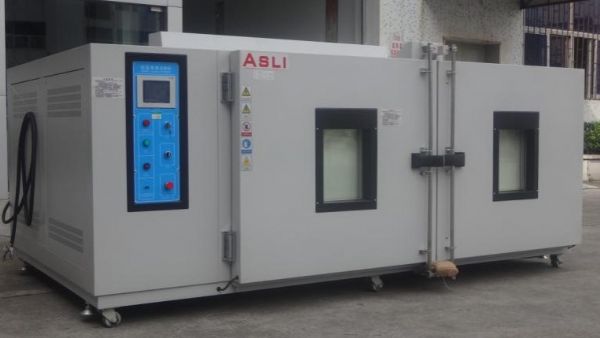Constant temperature and humidity test chamber controls temperature and humidity principle
A constant temperature and humidity test chamber is designed to simulate specific environmental conditions, allowing users to evaluate a product's resistance to high temperatures, low temperatures, and humidity. This equipment is equipped with multiple functions, including heating, cooling, humidification, and dehumidification, making it a versatile tool for various testing requirements. The heating system in a constant temperature and humidity test chamber plays a crucial role in maintaining the desired environmental conditions. When the controller receives a heating command, it sends an output voltage (typically 3–12 volts DC) to a solid-state relay. This activates the relay, effectively connecting the AC circuit and enabling power to flow to the heater. At the same time, a contactor is engaged, allowing current to pass through the heating element. The heat generated is then distributed throughout the chamber by a circulating fan, rapidly raising the internal temperature to the set value. The controller manages this process by switching the solid-state relay on and off, adjusting the heat output based on real-time readings displayed on the machine’s screen. For temperatures above 89°C, the control is relatively straightforward. However, when maintaining stability below 89°C, the system relies on a balance between the heating element and the refrigeration cycle. The heating is controlled via the solid-state relay, while the cooling function is managed through the compressor-based refrigeration system. This dynamic equilibrium ensures that the temperature remains stable and accurate within the required range. Cooling is a vital component of the constant temperature and humidity test chamber. It is primarily achieved through a refrigeration cycle consisting of four main parts: the compressor, condenser, throttling device, and evaporator. The compressor draws in low-temperature, low-pressure refrigerant gas, compresses it into high-temperature, high-pressure gas, and sends it to the condenser, where it releases heat and condenses into a liquid. The cooled refrigerant then passes through the throttling device, reducing its pressure, and enters the evaporator. Here, it absorbs heat from the chamber, turning back into a low-temperature, low-pressure gas, and the cycle repeats. This continuous process enables effective cooling of the test chamber. The humidification system operates similarly to the heating system. It involves heating water to produce steam, which is then released into the chamber to increase humidity levels. This method ensures precise and efficient moisture control. On the other hand, the dehumidification process is also carried out using the refrigeration system. The evaporator inside the chamber is kept at a low temperature, causing moisture in the air to condense into liquid. This condensation removes excess humidity from the chamber, maintaining the desired dryness level over time. At ASLI, our commitment to customers has always been clear: "To provide customers with the most satisfactory service." We believe that quality, reliability, and exceptional support are essential to building long-term trust and satisfaction. Whether you're conducting critical tests or exploring new applications, we are here to ensure your experience is seamless and successful. Floating Chest Of Drawers,Living Room Furniture,Fully Assembled Dressers,Light Wood Bookshelf Wuxi Baiyu Pharmaceutical Equipment Manufacturing Co., Ltd , https://www.assembledcabinet.com